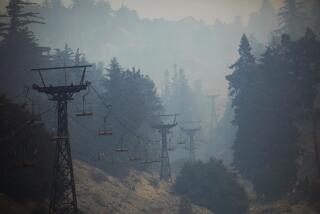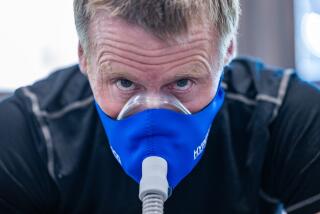Outback crush
Teton Pass, Wyoming â A rescue helicopter buzzed overhead as skiers atop Mt. Glory watched and waited for the all-clear. Guards kept them from dropping into avalanche-prone Glory Bowl during the tricky extrication of an injured snowboarder who had launched off a cliff. Nearly 2,000 feet below, traffic backed up on the busy two-lane commuter road through Teton Pass that had been converted into a landing pad.
Even on uneventful days, vehicles filled with skiers and snowboarders inch along this highway looking for an open slot in the widened pullout that serves as a parking lot. Theyâre part of an exodus from groomed slopes and trails that is growing throughout the West as lift-ticket prices rise and gear innovations facilitate easier backcountry access.
Along this stretch of open bowls, glades and steep couloirs at the southern tip of the Tetons, the turnout on a recent Saturday included roughly 90 cars from Colorado, Utah, Montana, New York and North Carolina -- plus plenty from Wyoming and neighboring Idaho. Such congestion is making people increasingly edgy because there is no relief in sight and because skiers and boarders are getting bolder.
âCertainly 10 or 15 years ago, nobody skied Glory Bowl. Now theyâre up there every day,â said Susan Marsh, recreation specialist for Bridger-Teton, one of two national forests in the area. Or at least skiers would hold off until spring, when the snowpack is more predictable.
Keeping skiers off slopes when thereâs high avalanche danger or avalanche-control bombings is impossible. Bridger-Teton officials try to educate the public through daily advisories on snow-pack stability. But in 2000, on a day when forecasters had deemed the probability of a human-triggered slide âconsiderable,â a snowboarder in Glory Bowl unleashed a slab that charged 2,000 feet downhill and across the highway, miraculously skirting cars.
Meanwhile, backcountry enthusiasts have been squabbling among themselves over trail aesthetics. Mt. Glory rewards those who hike up its 1,655-foot bootpack -- a sort of stepladder kicked into the snow -- with a sweeping view of the craggy Grand Teton and its underlings. Foot traffic is so relentless that, during a three-week drought in January, piles of dog feces dotted the icy ladder. One skier filled a grocery sack with the waste and hung it next to a sign asking hikers to pick up after their pets.
Skiers and boarders also are at odds. The skiers affix climbing skins to ski bottoms to ascend ridges and bowls and then the snowboarders walk on those tracks, chewing them up. Things got so bad earlier this season that U.S. Forest Service officials advocated enlisting volunteers to help keep the peace, a move that skier Tim Bradshaw and others deplore.
âNo more âtrollers,â he said, comparing the proposed uniformed volunteers to resort ski patrollers. âI want to get away from people.â
Others say thereâs no escaping the traffic, so why not create a shuttle service at the base of the pass? Or build a big parking lot complete with a visitorsâ center, heated restrooms and naturalist guides? Although itâs the kind of development most come here to avoid, âI couldnât see how it could ruin it much more than it is,â said longtime pass skier Halsey Hewson. âIt would probably make it better. Itâs already a crisis.â
Access fees could underwrite improvements and policing of user conflicts. Gridlock and standoffs between snowmobilers and skiers on Coloradoâs Vail Pass in 1990 prompted state highway officials and the Forest Service to convene a task force to resolve disputes.
The group divided the terrain between motorized and non-motorized users, put up signs, printed maps and posted patrollers at trailheads. To pay for proactive management, the Forest Service now charges $5 per person.
But fees have yet to gain a foothold in Wyoming, a conservative state with a senior U.S. senator, Republican Craig Thomas, rallying to end Forest Service authorization to charge fees like those at Vail Pass. Bridger-Teton is instead exploring the shuttle service and recruiting volunteers to talk to visitors about trail etiquette and, more important, avalanche danger.
The day the snowboarder was rescued on Mt. Glory, rescuers on a nearby peak recovered the body of a local man who had bypassed Glory for less-trafficked terrain and triggered a slide.
âPeople are trying to get somewhere,â Marsh said, âwhere thereâs untracked powder.â
More to Read
Sign up for The Wild
Weâll help you find the best places to hike, bike and run, as well as the perfect silent spots for meditation and yoga.
You may occasionally receive promotional content from the Los Angeles Times.






